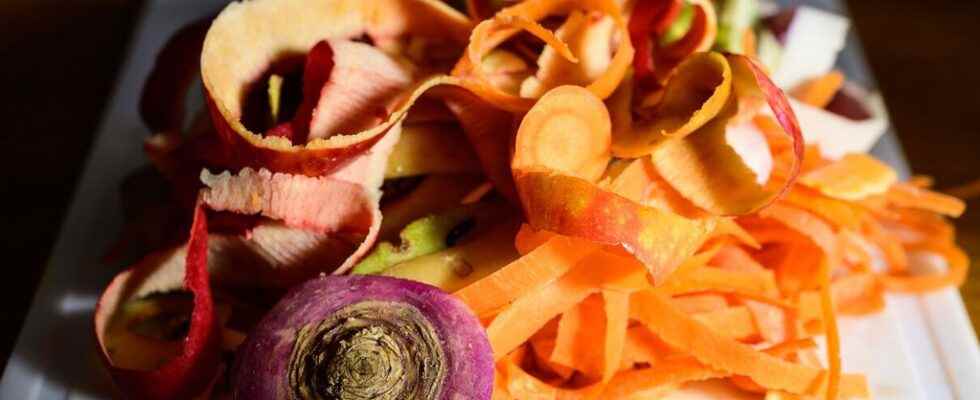Peelings, pods, tops, stems, skins … Peelings are ecological and economical. Here are 9 anti-waste recipe ideas to recycle them.
Gone are the days when you threw your peelings in the trash! At best it is preferable to compost or cook them.
Peelings do not mean just the peels, but the skins, bark, cores, seeds, pits, ribs, stems, pods, tops, etc. Cooking vegetable tops and peelings is anti-gas cookingi. This type of cooking has 3 advantages:
- Economic : as the chemist and philosopher Antoine Lavoisier said “nothing is lost, nothing is created, everything is transformed“, cooking the peelings allows you to throw less and cook more, which is more economical.
- Ecological : cooking the peelings helps reduce your waste and is good for the planet
- Nutritional : vitamins and fibers are more present in the skin of fruits and vegetables, so cooking them allows you to benefit from all their nutritional benefits.
Which peelings are recycled?
In addition, you should know that you can only recycle peelings that organic and untreated vegetables. Indeed, it would be a shame to concoct a soup with pesticides. Even if your fruits and vegetables are organic, it will be necessary to get rid of damaged or yellowed leaves and then wash them to reuse them. Also be sure to remove the larger stems that are too hard.
Also, you can’t eat all the vegetable tops. The tops of eggplants, peppers, potatoes and tomatoes should be avoided. On the other hand, you can eat those of beets, broccoli, kohlrabi, carrots, fennel, turnip, spring onions, radishes …
Source : Ma Petite Cuisine Anti-Gaspi by Natacha Mouton
Read also :
Loading widget
Subscribe to the Top Santé Newsletter to receive the latest news for free








